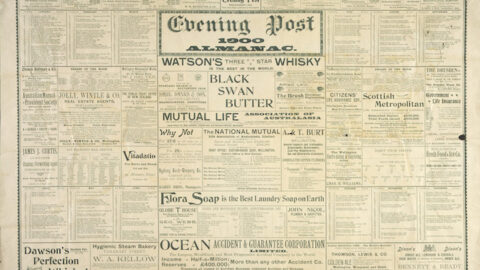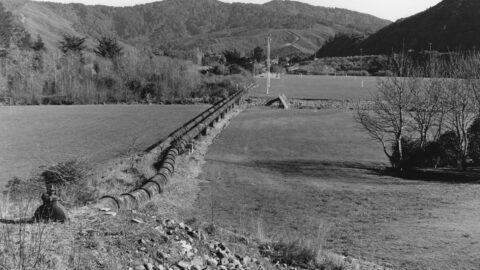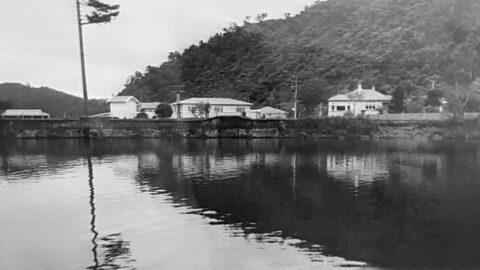ORONGORONGO MAIN
TESTING THE JOINTS — THE FINAL TIGHTENING
It was disclosed at the last meeting of the Hutt County Council that the staff of the city waterworks and drainage engineer had been very busy exposing the water-mains that were recently laid from the Orongorongo stream into the Hutt Valley and on to Wellington, and the county engineer, in reply to questions, stated that the excavation work which had been going on along the pipe line was occasioned by the testing operations that were being carried out.
When this matter was referred to him yesterday, the City waterworks engineer, Mr J. M. Morice, said that it was very necessary that these steel lock-bar pipe joints should be thoroughly tested before they were subjected to the full pressure that would be placed on them when the time came to turn on the new supply.
Mr Morice explained that hitherto the pipes used to bring water into town from Wainui or Karori were made of cast iron, which were not asked to stand nearly the pressure (or weight of water) that would be placed on the Orongorongo main. The new main took in its supply from a height of 600 feet above sea level, whereas the altitude of the new dam at Wainui was 471 feet, the old dam at Wainui, 420 feet; the old reservoir at Karori, 463 feet; and the new reservoir at Karori, 579 feet above sea level.
The proposal was that the water from the intake at Orongorongo should flow by direct main into the lower dam at Karori on gravity. It would be too much to ask it to flow into the top dam at Karori, as there was too little difference in the height above sea level to ensure a lively flow, so the emergency basin would be the lower dam at Karori, which would be kept full so as to give a direct fall to the city mains and also the suburban districts up to its own height or thereabouts.
The calculated pressure on the lower levels, coming across Lower Hutt and Petone, would be 346 lbs to the square inch. Such a pressure could not be withstood by the old cast-iron mains, the joints of which were plugged by molten lead. Such a form of joint could never be applied to the latter-day steel mains, which are clamped together with the aid of a stout iron collar that pressed into a rubber band.
When it was suggested that rubber was a substance liable to perish, Mr Morrice said that away from the light and to a great extent immune from sudden changes of temperature, rubber had a fairly long life. There were many water-main joints on the market today, but nearly all of them provided for a rubber-clamped joint.
It was always known that the first tightening of the joints would not be the final one before the water was admitted, but it was not considered wise to have the trenches open in certain places, and it was because they now had to act at each joint for the final tightening that the mains had to be exposed once more. open in certain places, and it was because they now had to act at each joint for the final tightening that the mains had to be exposed once more.
Tags: Newspaper Orongorongo Pipeline Pipeline Waterworks




